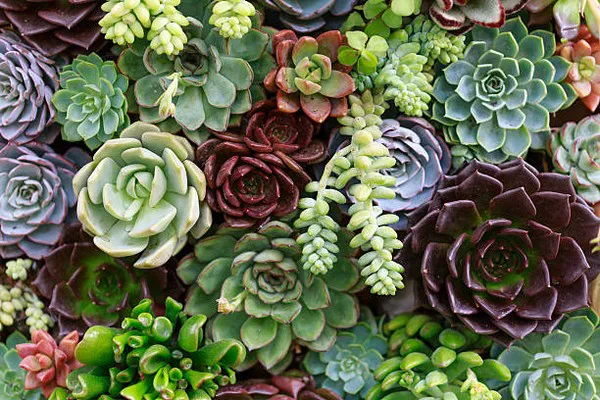Succulents have gained immense popularity in recent years due to their unique appearance and ability to thrive in various environments. These captivating plants have specialized adaptations that allow them to survive in arid conditions with minimal water availability. However, like any living organism, succulents have specific requirements to ensure their long-term survival and optimal growth. In this comprehensive guide, we explore the essential elements that succulents need to thrive, including light, water, soil, temperature, and proper care practices. By understanding these fundamental needs, succulent enthusiasts can provide the ideal conditions for their plants, ensuring their health, longevity, and stunning aesthetics.
I. Light Requirements
Succulents are adapted to receive abundant sunlight in their natural habitats. Adequate light is crucial for their growth and overall well-being. Here are some key points to consider:
Bright Indirect Light:
Place succulents in locations with bright, indirect light for a significant part of the day. South or west-facing windows generally provide suitable light levels. Some succulents can tolerate direct sunlight, but intense, prolonged exposure may cause sunburn or leaf damage.
Adjusting Light Levels:
Monitor your succulents’ response to light. If they appear etiolated (stretching towards the light), it indicates insufficient light. Conversely, if the leaves show signs of sunburn or discoloration, it suggests excessive light exposure. Adjust the placement accordingly to find the right balance.
Seasonal Considerations:
During the summer, when the sun’s intensity is highest, providing some shade during the hottest hours of the day can prevent sunburn. In contrast, during the winter months, succulents benefit from as much direct light as possible.
II. Watering Guidelines
One of the defining characteristics of succulents is their ability to store water in their leaves, stems, or roots. Nevertheless, proper watering practices are crucial to prevent overwatering or underwatering. Consider the following guidelines:
Watering Frequency:
Succulents thrive with infrequent but thorough watering. Allow the soil to dry out almost completely between waterings, but avoid prolonged drought periods.
Avoid Overwatering:
Overwatering is the most common cause of succulent demise. Ensure that the soil is completely dry before watering again. Water sparingly during winter when succulents enter a period of dormancy.
Watering Techniques:
When watering, thoroughly saturate the soil until water drains out from the bottom of the pot. Discard any excess water to prevent root rot. Avoid misting or spraying the foliage excessively as it can promote fungal diseases.
Seasonal Adjustments: Succulents may require less frequent watering during cooler months and more frequent watering during hot summers. Monitor the soil moisture levels and adjust the watering schedule accordingly.
III. Suitable Soil Composition
Succulents have specific soil requirements that facilitate proper drainage and prevent waterlogged conditions. Here’s what you need to know about soil composition:
Well-Draining Soil:
Use a well-draining soil mix specifically formulated for succulents or cacti. These mixes typically consist of a combination of organic matter (such as peat moss or coconut coir) and mineral components (such as perlite, pumice, or coarse sand). This allows excess water to drain quickly, reducing the risk of root rot.
Soil pH:
Most succulents prefer slightly acidic to neutral soil (pH 6.0 to 7.0). Regular potting soil may retain too much moisture, leading to root rot. It is advisable to avoid heavy clay soils that hold water for extended periods.
Preventing Compaction:
Over time, potting soil can become compacted, inhibiting proper drainage. To avoid this, amend the soil with additional perlite or coarse sand during repotting to maintain its open structure.
Container Selection:
Use containers with drainage holes to prevent excess water accumulation at the root zone. This ensures that the soil drains effectively and reduces the risk of waterlogged conditions.
IV. Temperature Requirements
Succulents showcase remarkable adaptability to different temperature ranges. Understanding their preferred temperature conditions is essential for their survival:
Optimal Temperature Range:
Most succulents thrive in temperatures between 60°F and 80°F (15°C to 27°C). However, specific species may have varying temperature preferences, so it is important to research and select succulents that are compatible with your local climate.
Cold Tolerance:
While some succulents tolerate mild frost or brief periods of cold temperatures, most are not frost-hardy. Protect them from freezing temperatures by bringing them indoors during winter or providing adequate insulation and frost protection measures.
conclusion
By providing these essential elements—proper light, water management, suitable soil, appropriate temperature, airflow, container conditions, and occasional fertilization—you can create an environment in which succulents can thrive and survive for years to come.


